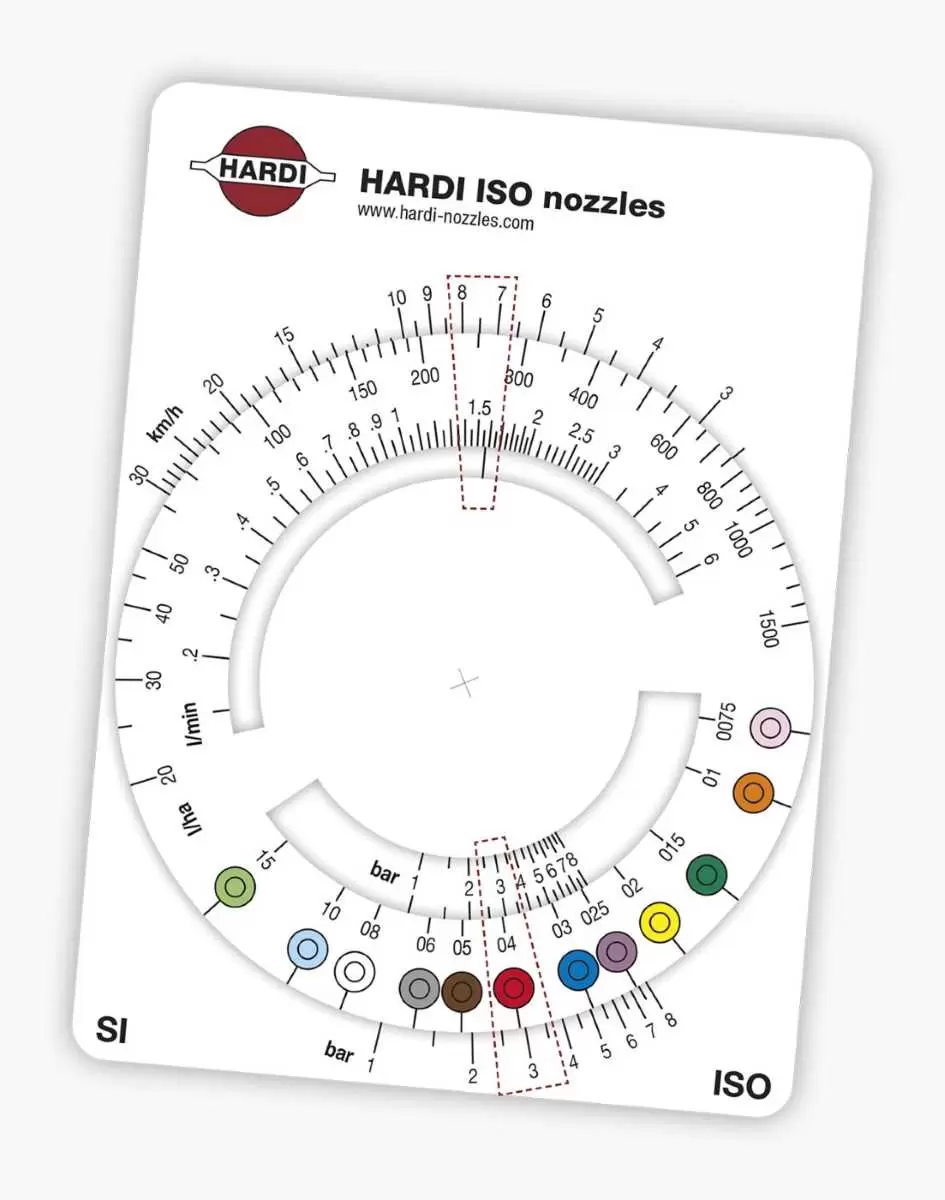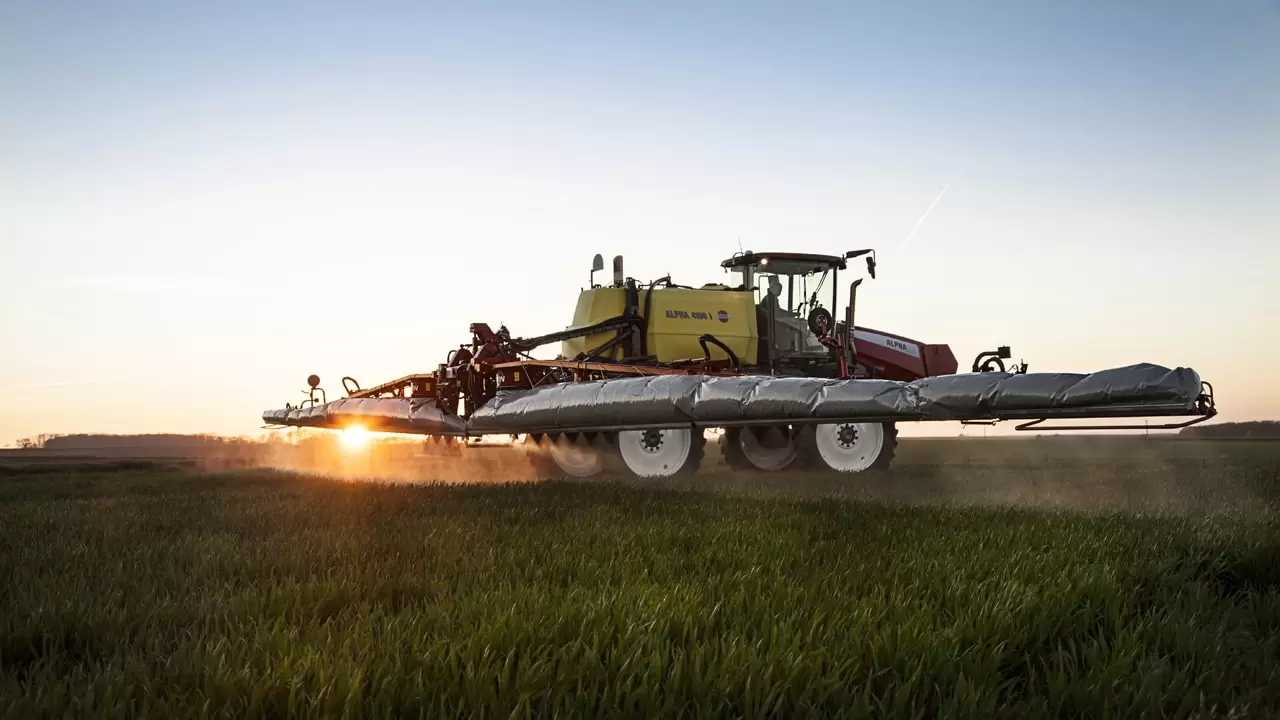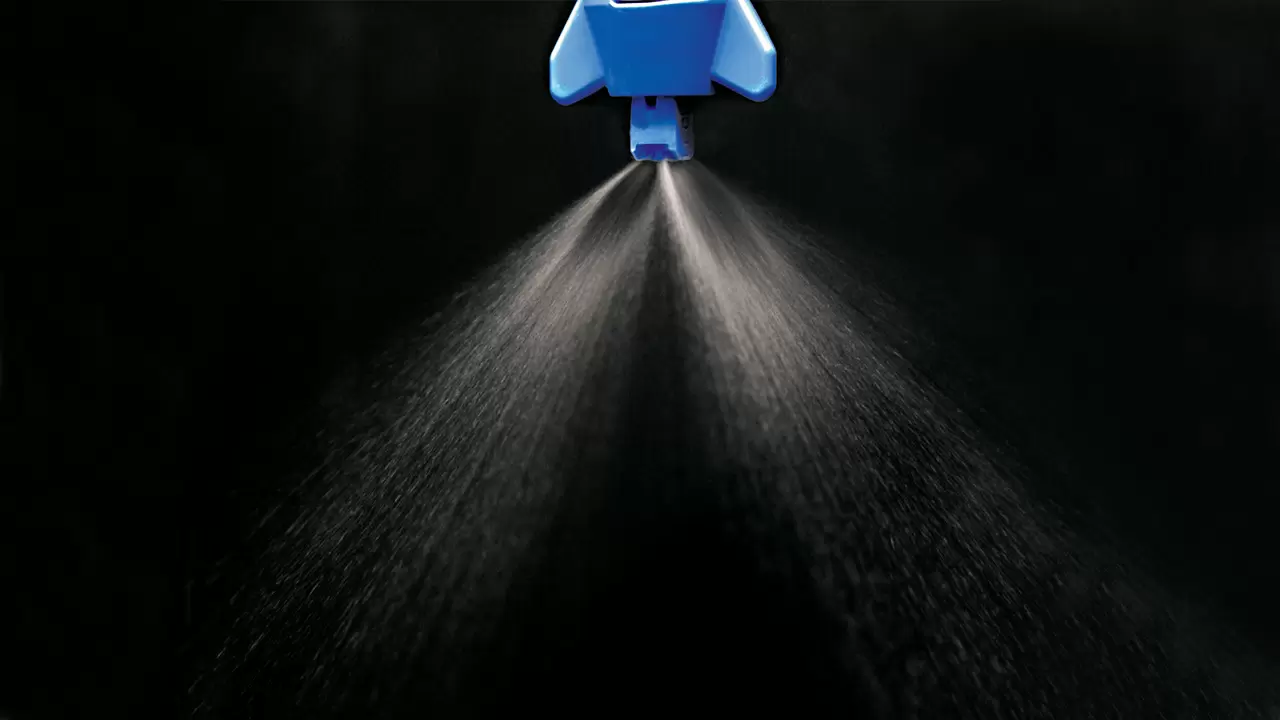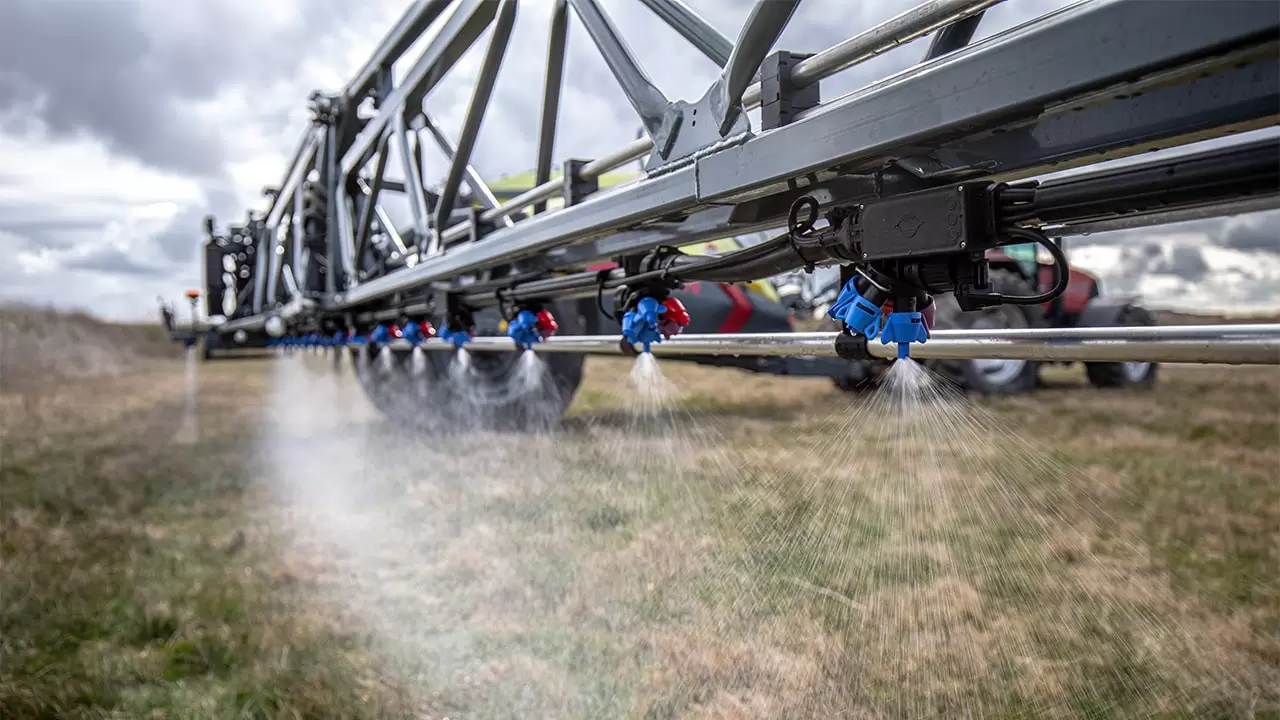Good spraying set-up can benefit the overall health and management of your crops
Conditions often change during the season which means you probably need to change the set-up of your sprayer to suit the specific spray conditions on the day.
Things to take into consideration are volume rates, driving speed, nozzles, and spray pressure
Always follow instructions on the agro-chemical label.
Calibration
Precise, safe applications in the field demand that the sprayer is effectively calibrated. Calibration must always be done with clean water and before the use of any crop protection product.
Follow the these three steps to calibrate your sprayer.
Check driving speed:
1. Half fill the spray tank with water.
2. Mark out 100 m and note time to drive this distance.
3. Driving speed formula: Distance driven (m) x 3.6 / Time (sec) = km/h
Example: If driving 100 m takes 50 seconds, then the spraying speed (100 x 3.6 / 50) is 7.2 km/hour.
Select volume rate, nozzle and pressure:
Use the calibration disc or formula (nozzle spacing 50 cm):
Example: By aligning 7.2 km/h over 150 l/ha on the calibration disc the line in the 'window' shows we need a flow of 0.9 l/min.
Then a suitable combination of nozzle size and pressure can be found on the lower half of the calibration disc. e.g. ISO 025 at 2,3 bar (or ISO 02 at 3,6 bar).
(The rate formula is: speed x coverage / 1200. For example, 7.2 km/h x 150 l/ha / 1200 = 0.9 l/min )
Check nozzle output
If the actual output is not equal to desired output; readjust pressure (alternatively, change nozzle or driving speed)
If the output has increased more than 10% from the table value, change all nozzles


Protecting the environment when spraying
Increasingly, it is recognised that the slower the boom moves the less air turbulence it generates, and therefore less drift and less disturbance in the quality of spray distribution.
Some important considerations need to be made before choosing a higher tractor gear:
| Side effects from higher speed: | How to deal with the side effects: |
| More turbulence / more wind drift | Bigger droplets or TWIN air assistance |
| More boom movement | Readjust the boom for optimum performance at a higher driving speed |
The droplet spectrum
All agricultural nozzles produce a range of droplet sizes. This is a useful feature as the crops to be sprayed always present a 3-dimensional target with contrasting leaf surfaces and angles. In a dense crop, for example, finer droplets are likely to be deposited on the top leaves and larger droplets lower down.
To describe the median droplet sizes produced from a specific nozzle, the term VMD (Volume Median Diameter) is used. VMD is the drop dimension where the accumulated volume of smaller droplets accounts for 50% of the liquid leaving the nozzle; and all larger droplets account for the remaining 50% of total volume.
Wind drift is generally regarded to be mostly caused by droplets below 150 micron in diameter.


Spray Pressure
Spray pressure influences spraying effectiveness in crops by 3 ways:
- Pressure influences the spray angle: the higher the pressure the wider the spray angle. If the pressure is too low (below 1,5 bar for flat fans and 3 bar for INJET) the spray angle is not wide enough to ensure full overlap and liquid distribution along the boom.
- The higher the pressure, the smaller the droplets and the more likely they are to be deposited within the upper canopy of the foliage. Smaller drops are also more sensitive to wind movement.
- The higher the pressure, the more surrounding air will be entrained with the spray, which helps larger droplets to penetrate the leaf canopy. The resulting air turbulence within the crop can also increase the deposition of smaller droplets on the underside of leaves, especially when using low output conventional nozzles
Changing nozzles
In many cases, a delay in spraying can result in the need for a higher chemical dose or an increased number of applications.
The possible reduction in efficacy from using a larger droplet size, which offers less risk of drift, will usually be far less consequential - so long as a good liquid distribution is achieved.
So it is a good idea to have a set of low drift or INJET nozzles on stand-by in case the wind speed increases. It is a lot more convenient and safer to change nozzles and finish spraying than return with a half full spray tank.
Because there can be up to 10% difference in flow for new and worn nozzles both sets of nozzles should be calibrated - even if both sets are ISO nozzles.

